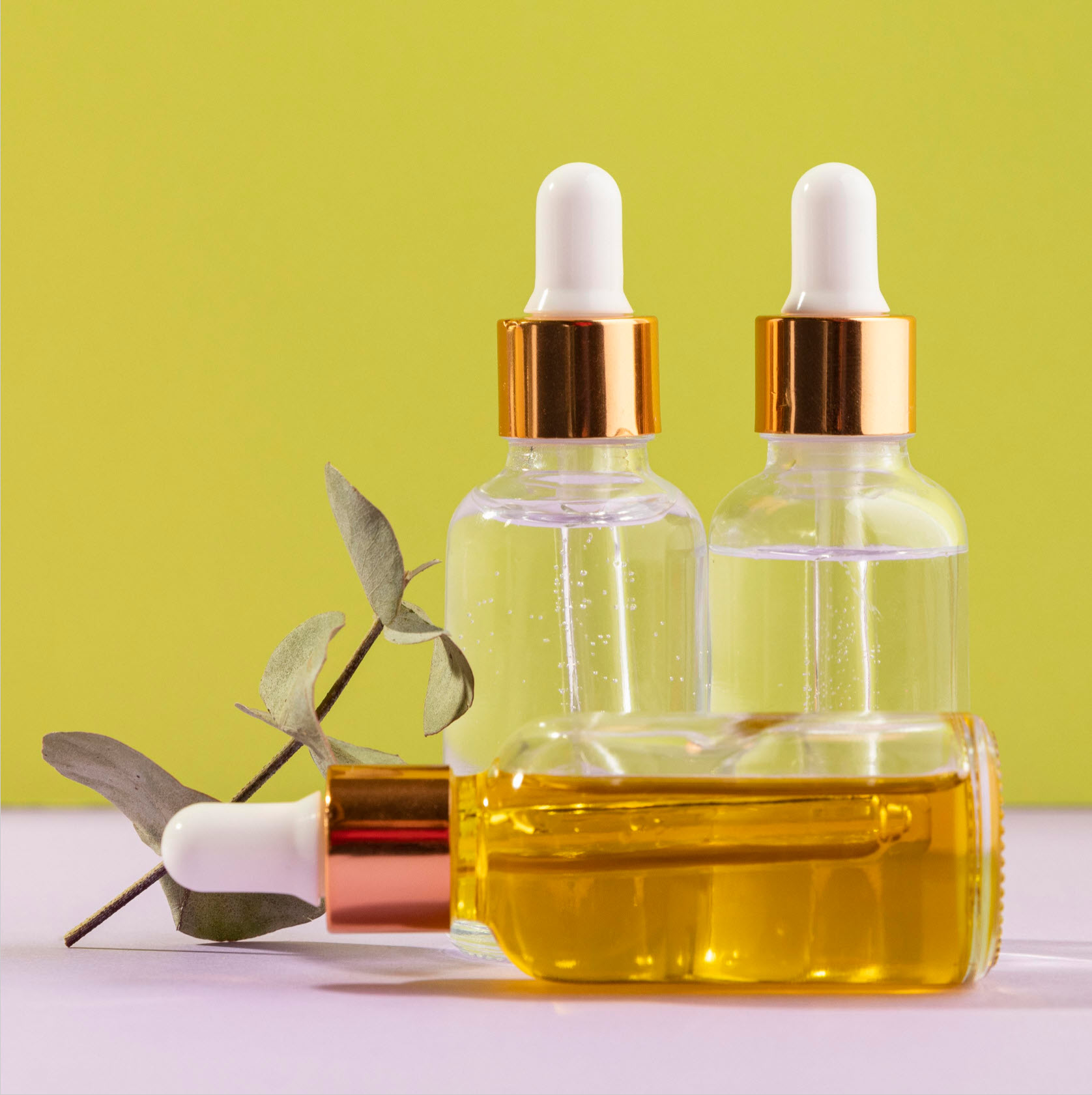
Every naturalist desires long, healthy, and beautiful hair. We all want to recreate and flaunt all the beautiful hairstyles we see without our hair length standing as a hindrance. This desire makes many people spend considerable time and money on hair care products from different brands, hoping to achieve their dream hair. However, the secret to growing long hair might already be in your kitchen.
Natural ingredients have been used for centuries to promote hair growth, and due to their numerous benefits, they have become increasingly popular in recent times.
This article will guide you through learning about the benefits of natural hair treatments, scalp massages, creating DIY hair growth serums, and offer tips for incorporating these treatments into your hair care routine.
Benefits of DIY Hair Treatments
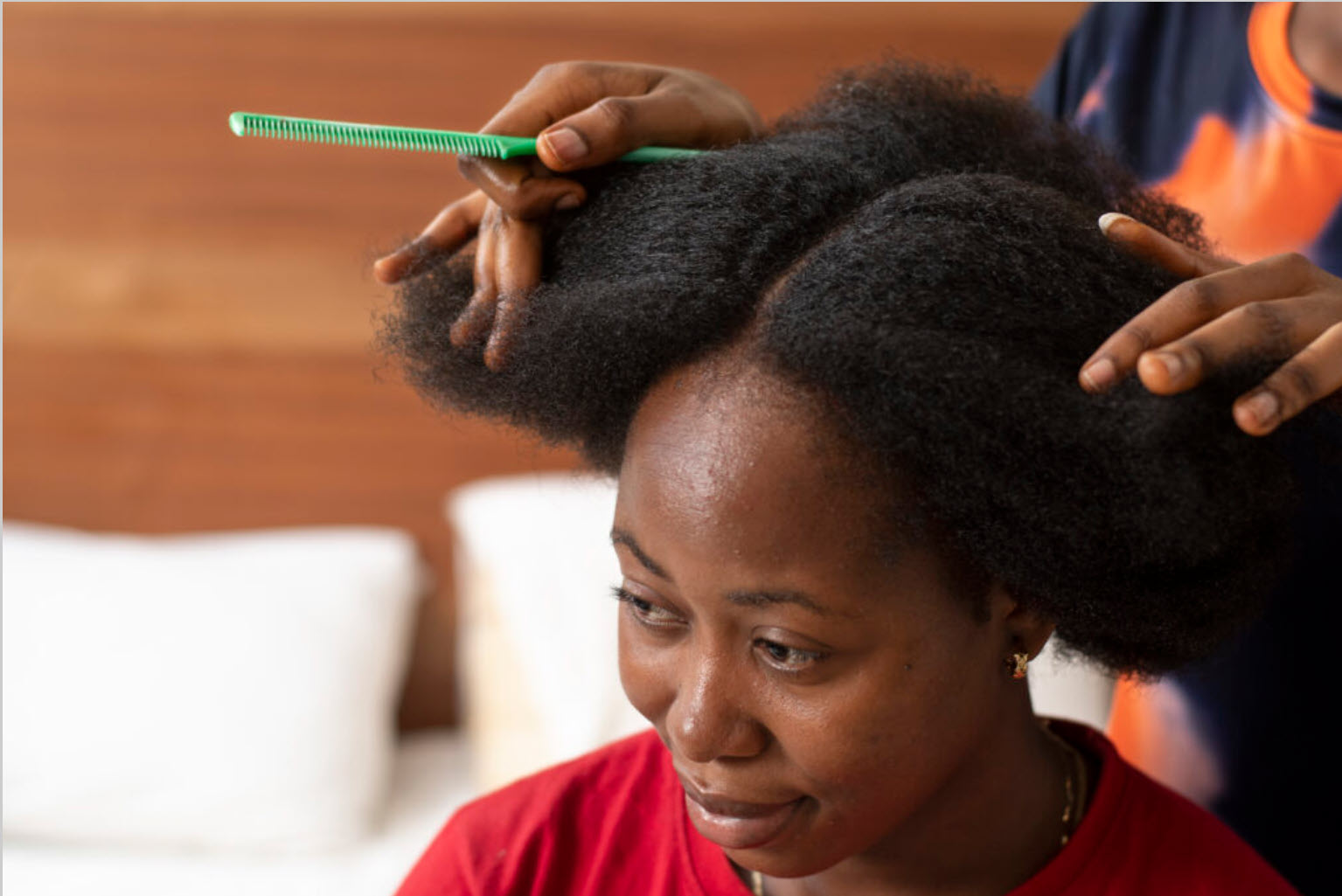
Chemical-free and Gentle
Unlike synthetic hair products, homemade hair treatments contain natural ingredients that are free from harmful chemicals such as sulphates, parabens, and synthetic fragrances, which can damage hair over time. This makes them very gentle on the hair and scalp, offering individuals maximum benefits without side effects.
Rich in Nutrients
Many natural ingredients, such as eggs, oils, avocados, mayonnaise, etc., are often rich in essential nutrients that are crucial for hair health. These ingredients contain vitamins, minerals, and antioxidants, which nourish the scalp, strengthen hair, promote hair growth, and protect hair follicles from damage.
Promotes Scalp Health and Hair Growth
Healthy hair starts with a healthy scalp. And it’s just so good to know that many natural ingredients have properties that help improve scalp health, ultimately promoting fast hair growth! An example of such an ingredient is tea tree oil. It is known for its antifungal and antibacterial properties, keeping dandruff at bay and promoting hair growth. Other ingredients like aloe vera, castor oil, rosemary oil, Jamaican black castor oil, etc., all offer amazing benefits for hair growth.
Provides Moisture and Hydration
Natural oils and ingredients such as coconut oil, honey, and aloe vera are excellent at providing moisture and hydration to the hair. They also help condition the hair and prevent issues such as dryness, tangles, and breakage, which is one of our biggest ‘hair enemies’.
Strengthens and Repairs Hair
Many natural ingredients, such as eggs, mayonnaise, yoghurt, etc., help to repair and strengthen hair and reduce split ends.
Customizable
Buying a commercial hair product will condition you into using that product no matter your preference. You have no right to ask for specific ingredients or to seek for the removal of any ingredient/chemical that you may be allergic to. BuHowever,or DIY treatments, the reverse is the case.
Here, your hair products can be tailored to meet your specific hair needs and concerns. You have the right to change any ingredient that you don’t want, produce in any quantity you want, as well as the opportunity to alter the proportions of the ingredients to suit your specific need per time.
Cost-Effective
Considering the huge amounts of money some people have spent on hair care products; this particular benefit should come first before any other. Using natural ingredients can be more affordable than buying specialized hair products. You don’t need to break the bank to get stuff like coconut oil, mayonnaise, or eggs. Your kitchen to the rescue!
DIY Hair Growth Serum Recipes

You don’t always have to buy all your hair products; you can make some for yourself, and that includes a hair serum. Before we continue with the recipes, just in case you don’t understand what a serum is, let’s have a little talk about it.
A hair serum is a hair care product designed to coat the surface of your hair to provide various benefits such as shine, smoothness, and protection against environmental damage. For now, we are going to focus on a scalp serum.
A scalp serum is applied directly to the scalp to address issues like dryness, dandruff, and inflammation and to promote a healthy environment for hair growth. It should contain ingredients such as essential oils, vitamins, peptides, and other actives to nourish the scalp, promote blood circulation, and stimulate hair follicles.
It also provides nourishment and hydration to the hair, atrengthens hair roots, enhances fair growth, reduces thinning, prevents hair fall ,and balances hair pH level.
Below are simple recipes on how to produce a homemade hair serum (Note that all of these recipes are produced in small batches) :
Argan Oil and Aloe Vera Serum
Ingredients:
2 tablespoons argan oil
1 tablespoon aloe vera gel
5 drops lavender essential oil (optional)
Instructions:
In a small bowl, mix the argan oil and aloe vera gel until well combined.
Add the lavender essential oil and stir again.
Pour the mixture into a small glass bottle with a dropper for easy application.
Avocado Oil and Vitamin E Serum
Ingredients:
2 tablespoons avocado oil
1 teaspoon vitamin E oil
5 drops tea tree essential oil (optional)
Instructions:
- In a small bowl, mix avocado oil and vitamin E oil.
- Add tea tree essential oil and blend thoroughly.
- Pour into a small dropper bottle.
- Apply to both your hair and scalp
Argan Oil and Jojoba Oil Serum
Ingredients:
2 tablespoons of argan oil
2 tablespoons of jojoba oil
5 drops of lavender essential oil
Instructions:
- Mix argan and jojoba oils in a small bottle.
- Add lavender oil and mix properly
- Shake well before each use.
- Apply a few drops to damp or dry hair, focusing on the ends.
- Style as usual.
Coconut Oil and Almond Oil Serum
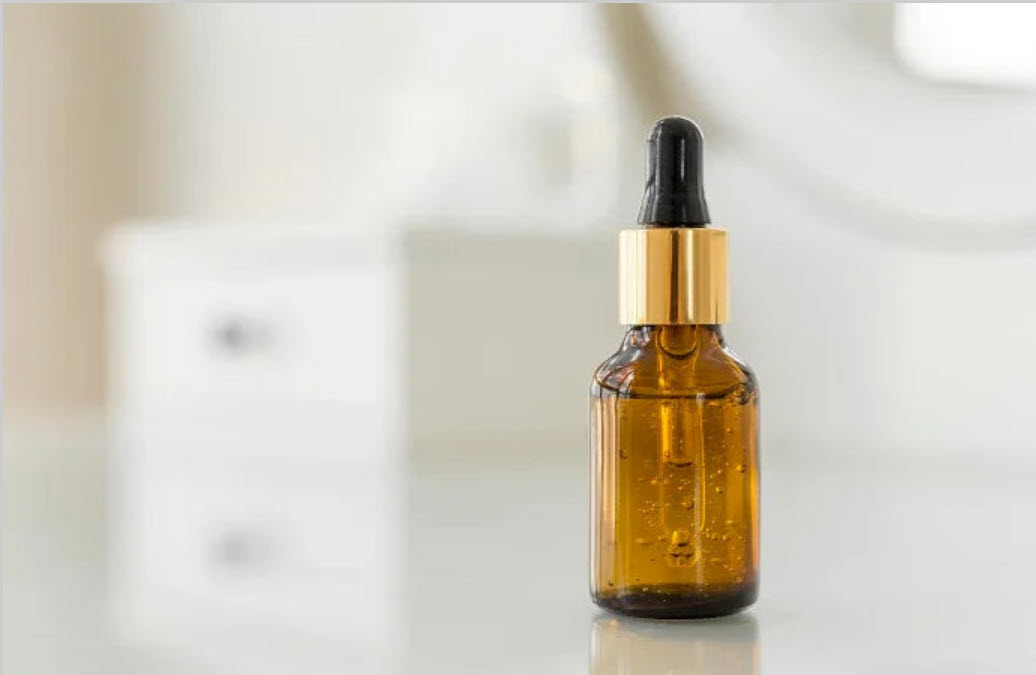
Ingredients:
2 tablespoons of coconut oil
2 tablespoons of almond oil
5 drops of rosemary essential oil
Instructions
- Combine coconut and almond oil in a small bottle.
- Warm slightly if coconut oil is solid.
- Add Rosemary oil and mix
- Apply a small amount to your palms, rub together, and run through your hair.
- Focus on the mid-lengths to ends.
Olive Oil and Avocado Oil Serum
Ingredients:
2 tablespoons of olive oil
2 tablespoons of avocado oil
5 drops of tea tree essential oil
Instructions:
Mix olive and avocado oil in a small bottle.
Ass tea tree oil and mix
Apply a small amount to damp hair, starting at the scalp and working through to the ends.
Leave in or style as usual.
Castor Oil and Coconut Oil Hair Serum
Ingredients:
2 tablespoons of castor oil
2 tablespoons of coconut oil
5 drops of rosemary essential oil
5 drops of peppermint essential oil
Instructions
Combine the castor oil and coconut oil in a small bowl.
Add the rosemary and peppermint essential oils to the mixture.
Mix well and transfer the serum to a small glass bottle with a dropper for easy application.
Apply a few drops to your scalp and massage gently with your fingertips.
Leave it on for at least 30 minutes, or overnight for deeper conditioning, then wash it out with a mild shampoo.
Aloe Vera and Rosemary Hair Serum
Ingredients:
2 tablespoons of aloe vera gel
1 tablespoon of jojoba oil
5 drops of rosemary essential oil
Instructions:
Extract fresh aloe vera gel from the leaf, or use store-bought pure aloe vera gel.
Mix the aloe vera gel with jojoba oil in a bowl.
Add the rosemary essential oil and blend well.
Apply the serum to your scalp and hair, focusing on the roots.
Leave it on for at least 1 hour before rinsing it off with lukewarm water.
All of these hair and scalp serums are rich in nutruents, which help to deeply moisturize hair, boost shine, combat dandruff, and stimulate hair growth. You can choose to apply them to your hair strands or scalp, as the case may be. And since this is a DIY, each of these serums can be tailored further by adjusting the essential oils to suit your personal preference or hair needs. To avoid any allergic reaction, always perform a patch test before using new oils.
For good results, learn to be consistent in your application. Being consistent is not synonymous to over-using the serums. Too much use of hair serums can cause your hair to become greasy. Another thing you must remember is to always follow up with a scalp massage after each application to your scalp.
The Benefits of Scalp Massages for Hair Growth
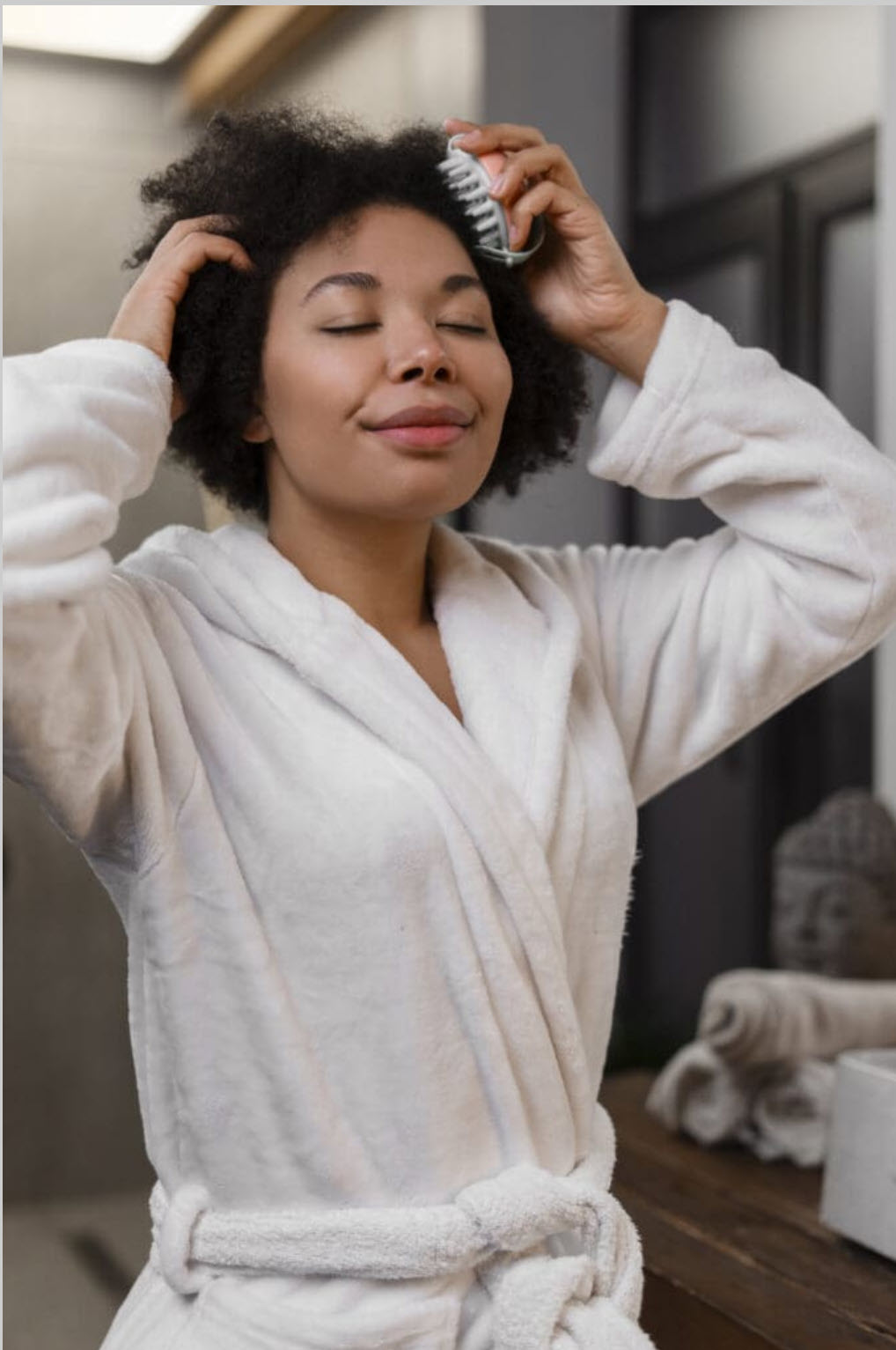
‘Scalp massage’ is a very popular term in the Natural Hair world. It has long been recognized for it’s ability to improve hair health and stimulate growth. Here are some of the key benefits:
Promotes Hair Growth
Almost all the time, when there is a case of bald edges, and stunted growth, a Scalp Massage is always recommended. This is because regular scalp massages improve blood flow to the hair follicles, ensuring that they receive more nutrients and oxygen, which is essential for healthy hair growth.
Reduced Stress Levels
If you’ve had a professional scalp massage before, or even one done by yourself, then you know just how soothing it can be. Stress is a significant factor in hair loss. Scalp massages help reduce stress by promoting relaxation and releasing tension, which can positively impact hair growth.
Stimulation of Hair Follicles
The physical action of massaging the scalp stimulates the hair follicles, which can encourage hair growth and thickness.
Removal of Dead Skin Cells
Massaging the scalp whether with your fingertips or a scalp massager, helps to exfoliate and remove dead skin cells, which can clog hair follicles and impede hair growth.
Increased Sebum Production
Scalp massages can help to distribute natural oils produced by the scalp, ensuring that the hair remains moisturized and healthy.
Techniques for Effective Scalp Massages
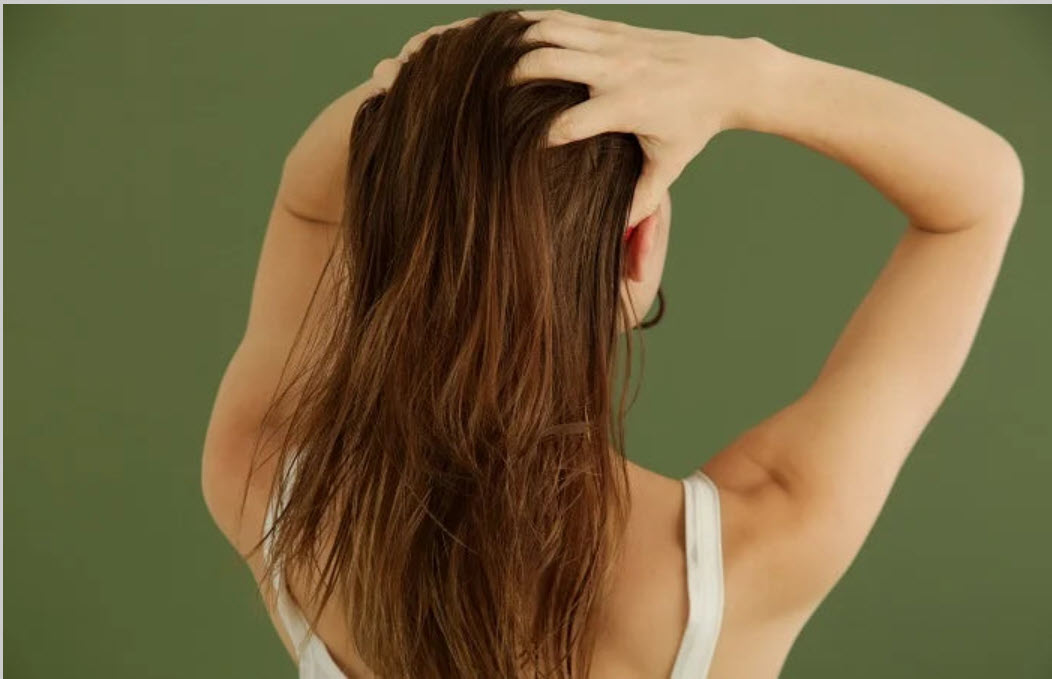
Use Your Fingertips
Use the pads of your fingers to massage your scalp gently. Avoid using your nails, as they can scratch and damage the skin.
Circular Motions
Use circular motions to massage your scalp, starting from the hairline and moving towards the nape of your neck. Ensure you cover the entire scalp.
Gentle Pressure
Apply gentle but firm pressure while massaging. Avoid being too rough, as this can irritate.
Warm Oil Massage
For an enhanced experience, warm your chosen hair oil slightly before applying it to your scalp. This can help the oil penetrate more deeply and improve its effectiveness.
Remember that you need to be consistent in all of these. Incorporate massages with serums into your hair regimen, monitor your progress, maintain a healthy lifestyle, and be very patient.











